Air in motion is known as wind. Wind plays a significant role in determining the weather system of a given region.
Because of the rotation of the Earth, wind deflects to the right in the Northern Hemisphere and left in the Southern Hemisphere. The phenomena first reported by Coriolis and hence it is known as Coriolis Force.
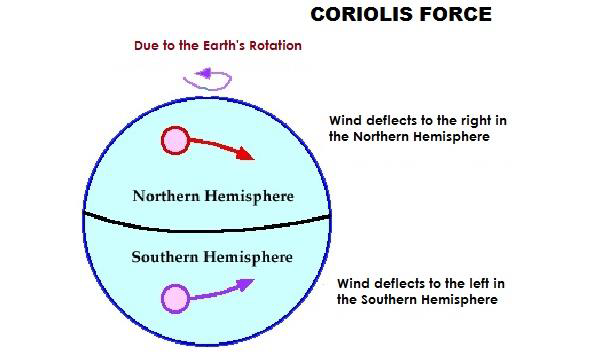
To read the wind direction, weather vanes are used; however, at the airport, windsocks are used (indicated the wind direction).
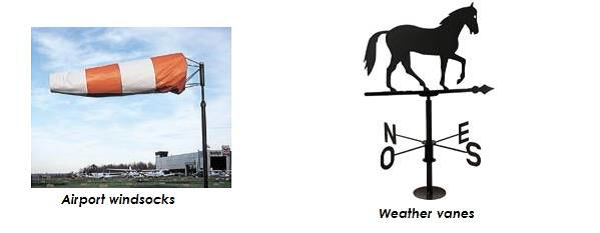
Anemometer is used to measure the wind speed.

Types of Winds
Winds normally are categorized as −
Primary Winds: It is also known as Prevailing Winds and Planetary Winds.
Secondary winds: It is also known as Periodic Winds and Seasonal Winds.
Local Winds: It is originated because of the local temperature and/or pressure difference.
Major Planetary Winds (as shown in the following image) are −
Polar Easterlies
Westerlies (Mid-latitude)
Trade Winds (Tropics)
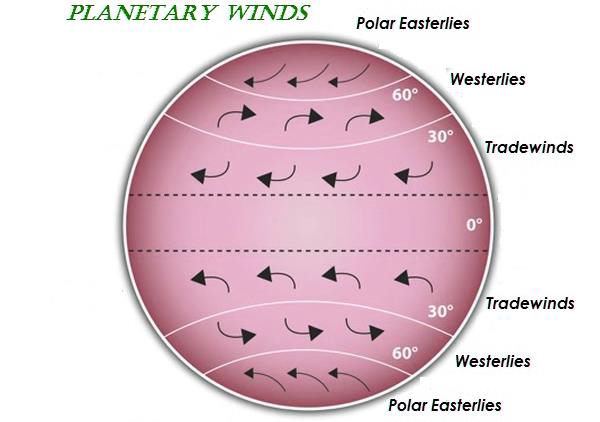
Seasonal or Periodic Winds blow periodically i.e. for a specific period. For example, Monsoons (as shown in the following image).
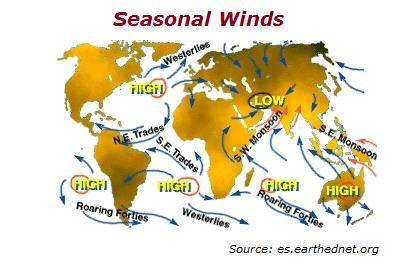
Local Winds, which are originated largely because of the temperature differences are a localized phenomenon. The following map shows the major local winds of the world −
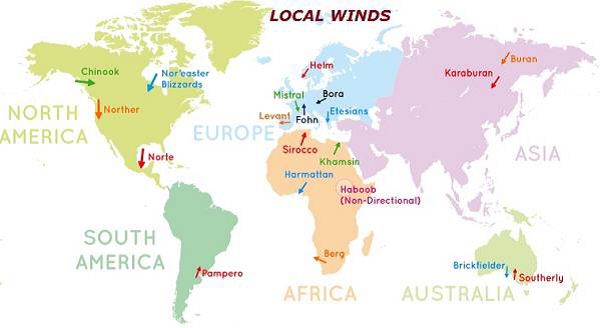
| Local Winds | Region/Location |
|---|---|
| Chinook | Canada & USA (Rockies Mountain Region) |
| Santa Anas | California (USA) |
| Pampero | Argentina (South America) |
| Zonda | Argentina (South America) |
| Norte | Mexico (Central America) |
| Papagayo | Mexico (Central America) |
| Foehn | Switzerland (Alps Region) |
| Salano | South Spain |
| Mistral | France |
| Tramontana | North Italy |
| Levant | South France |
| Helm | England |
| Etesian | Greece |
| Berg | South Africa |
| Sirocco | Sahara Region (North Africa) |
| Khamsin | Egypt |
| Gibli | Tunisia |
| Harmattan (also known as Doctor Wind) | West Africa |
| Bora | South & South Eastern Europe |
| Loo | Northern India & Pakistan |
| Simoon | Arabia |
| Buran (also known as Purga) | East Asia |
| Karaburan | Central Asia |
| Brickfielder | Victoria (Australia) |
| Norwester | New Zealand |
The highlighted terms (blue in color) are shown in the map given above.
Jet Streams
Jet streams are narrow and meandered strip of fast blowing air currents found in the upper altitude (i.e. upper troposphere or lower stratosphere).
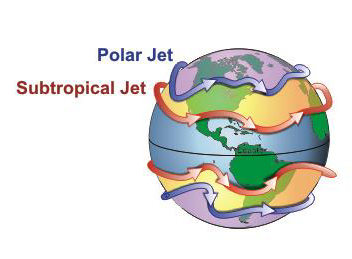
El Niño
El Niño, also known as El Niño Southern Oscillation (or ENSO), refers to the cycle of warm and cold temperatures, as measured by sea surface temperature, of the tropical central and eastern Pacific Ocean. However, the cool phase of ENSO is known as "La Niña."
El Niño is accompanied by high air pressure in the western Pacific and low air pressure in the eastern Pacific (as shown in the following image).
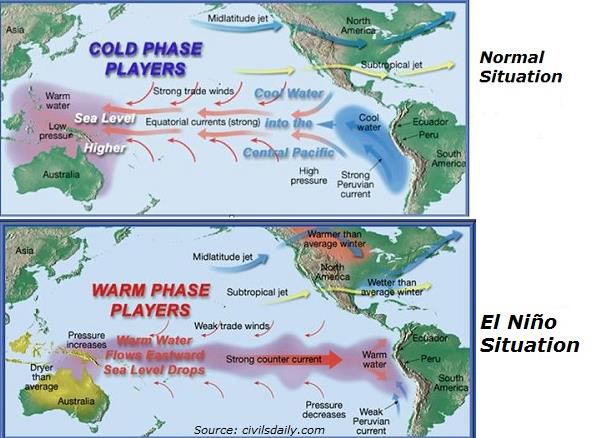
Cyclone
Cyclone is a large-scale air mass that keeps rotating around a strong center of low pressure. It rotates counterclockwise in the Northern Hemisphere and clockwise in the Southern Hemisphere.
In the northeastern Pacific oceans and the Atlantic Ocean, the tropical cyclone is known as “Hurricane.”

In the Indian and south Pacific Oceans, the tropical cyclone is called as “Cyclone,” and in the northwestern Pacific Ocean it is known as “Typhoon.”
In the South Indian Ocean (specifically South-west of Australia), a tropical cyclone is known as “Willy-Willy.”
Anticyclone
Anticyclone is a large-scale wind system that circulates around a central region of high atmospheric pressure. It rotates clockwise in the Northern Hemisphere and anti-clockwise in the Southern Hemisphere (the following image illustrates the comparative structure of cyclone and anti-cyclone).
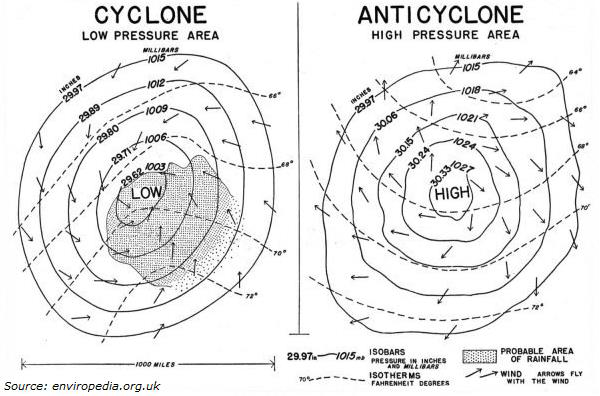

ಕಾಮೆಂಟ್ಗಳಿಲ್ಲ:
ಕಾಮೆಂಟ್ ಪೋಸ್ಟ್ ಮಾಡಿ